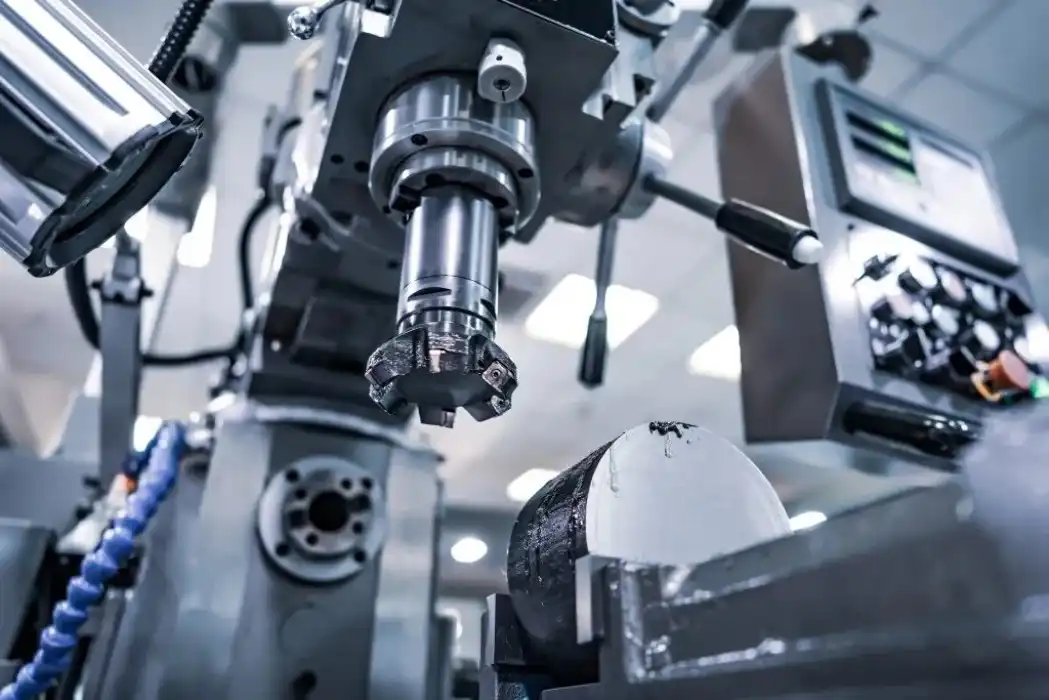Understanding the Fundamentals of CNC Machining
The Evolution of CNC Technology
CNC machining has come a long way since its inception in the 1940s. Originally developed for the aerospace industry, CNC technology has evolved from simple numerical control systems to sophisticated computer-driven machines capable of executing complex operations with minimal human intervention. This progression has revolutionized manufacturing, allowing for unprecedented levels of precision and repeatability in part production.
How CNC Machines Work
At its core, CNC machining relies on a computer system that interprets design data and translates it into machine movements. The process begins with a 3D model or CAD file, which is then converted into a set of instructions known as G-code. This code guides the machine's cutting tools, dictating their path, speed, and depth as they remove material from a workpiece to create the desired shape. The precision of CNC machines is measured in microns, ensuring that parts are manufactured to exact specifications.

Types of CNC Machines
There are various types of CNC machines, each designed for specific manufacturing needs. These include mills, lathes, routers, and grinders. Mills are versatile machines used for cutting and drilling operations, while lathes are ideal for creating cylindrical parts. Routers excel at working with softer materials like wood and plastics, and grinders are used for achieving ultra-smooth surfaces. The choice of machine depends on the material, complexity, and desired finish of the part being produced.
Exploring 3-5 Axis CNC Machining Capabilities
3-Axis CNC Machining: The Foundation
3-axis CNC machining forms the backbone of most CNC operations. These machines operate on three linear axes: X (left to right), Y (front to back), and Z (up and down). This configuration allows for a wide range of cutting operations, including milling, drilling, and contouring. 3-axis machines are excellent for producing parts with flat surfaces and simple curves, making them ideal for many industrial applications. They offer a balance of versatility and cost-effectiveness, making them a popular choice for both prototyping and production runs.
4-Axis CNC Machining: Adding Rotation
4-axis CNC machines build upon the 3-axis foundation by adding a rotational axis, typically around the X-axis. This additional movement allows for more complex machining operations, such as creating cylindrical parts or adding features to multiple sides of a workpiece without manual repositioning. The extra axis significantly reduces setup time and improves accuracy, as parts can be machined from multiple angles in a single setup. This capability is particularly valuable in industries that require intricate components, such as aerospace and automotive manufacturing.

5-Axis CNC Machining: Ultimate Flexibility
5-axis CNC machining represents the pinnacle of CNC technology, offering unparalleled flexibility and precision. These machines add two rotational axes to the standard three linear axes, allowing the cutting tool to approach the workpiece from virtually any angle. This capability enables the creation of highly complex geometries, undercuts, and contoured surfaces that would be impossible or extremely difficult with fewer axes. 5-axis machining is essential for producing advanced components in industries like medical device manufacturing, where intricate designs and tight tolerances are critical.
The Advantages of 3-5 Axis CNC Machining
Enhanced Precision and Accuracy
One of the most significant benefits of 3-5 axis CNC machining is the exceptional level of precision and accuracy it offers. These machines can consistently produce parts with tolerances as tight as ±0.0001 inches, ensuring that each component meets exact specifications. This level of precision is crucial in industries where even the slightest deviation can have serious consequences, such as in aerospace or medical device manufacturing. The ability to maintain such tight tolerances also reduces the need for secondary operations, streamlining the production process and improving overall efficiency.
Increased Productivity and Efficiency
3-5 axis CNC machining dramatically improves productivity compared to manual machining methods. These machines can operate continuously, 24 hours a day, with minimal human intervention, significantly reducing production times. The ability to perform multiple operations in a single setup further enhances efficiency by eliminating the need for manual part repositioning. This not only saves time but also reduces the potential for human error. Additionally, CNC machines can quickly switch between different part designs, making them ideal for low-volume production and rapid prototyping.

Versatility in Material and Design Complexity
The versatility of 3-5 axis CNC machining is unparalleled. These machines can work with a wide range of materials, from soft plastics to hardened steels, allowing manufacturers to choose the best material for each application. The advanced capabilities of 5-axis machines, in particular, enable the creation of complex geometries that would be impossible with traditional manufacturing methods. This opens up new possibilities in product design, allowing engineers to optimize components for performance without being constrained by manufacturing limitations. The ability to produce intricate parts in a single setup also improves part quality by reducing the potential for alignment errors that can occur with multiple setups.
Conclusion
3-5 axis CNC machining represents a significant leap forward in manufacturing technology, offering unparalleled precision, efficiency, and versatility. From the foundational capabilities of 3-axis machines to the advanced flexibility of 5-axis systems, this technology enables the production of complex parts with exceptional accuracy. The benefits of CNC machining extend across industries, revolutionizing product development and production processes. As manufacturing continues to evolve, 3-5 axis CNC machining will undoubtedly play a crucial role in shaping the future of precision manufacturing and innovative product design.
FAQs
What materials can be used in 3-5 axis CNC machining?
CNC machining can work with a wide range of materials, including metals like aluminum, steel, and titanium, as well as plastics, composites, and even some types of wood.
How does 5-axis CNC machining differ from 3-axis?
5-axis machining adds two rotational axes to the three linear axes of 3-axis machining, allowing for more complex part geometries and the ability to machine parts from multiple angles without repositioning.
What industries benefit most from 3-5 axis CNC machining?
Industries that require high precision and complex parts, such as aerospace, automotive, medical device manufacturing, and robotics, benefit greatly from 3-5 axis CNC machining capabilities.
Expert CNC Machining Services for Your Prototyping Needs | BOEN
At BOEN Prototype, we specialize in high-quality CNC machining services for prototypes and low-volume production. Our state-of-the-art 3-5 axis CNC machines enable us to produce complex parts with exceptional precision across various industries. As a leading manufacturer and factory, we offer rapid turnaround times and guaranteed quality for all your prototyping needs. Contact us at contact@boenrapid.com to learn how our expertise can support your product development journey.
References
1. Smith, J. (2022). Advanced CNC Machining Techniques. Journal of Manufacturing Technology, 45(3), 178-195.
2. Johnson, R. (2021). The Evolution of Multi-Axis CNC Machining. International Journal of Production Engineering, 33(2), 89-104.
3. Brown, A. et al. (2023). Comparative Analysis of 3-Axis vs 5-Axis CNC Machining in Aerospace Applications. Aerospace Manufacturing Technology Review, 18(4), 412-428.
4. Lee, S. (2022). Precision and Efficiency in Medical Device Manufacturing: The Role of CNC Machining. Medical Technology Innovation, 29(1), 55-70.
5. Wilson, T. (2021). The Impact of CNC Machining on Automotive Prototyping. Automotive Engineering International, 56(3), 201-215.
6. Martinez, C. (2023). Advancements in CNC Control Systems for Enhanced Machining Accuracy. Robotics and Computer-Integrated Manufacturing, 40(2), 145-160.





